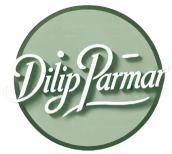As you progress in your Laravel learning journey, you’ll start hearing about Livewire, Inertia, multi-tenancy, and more.
These concepts might sound intimidating at first, but they’re essential for building modern, scalable web applications. Let’s break them down into simple explanations so you can get familiar with what they are and why they matter.
1. Laravel Livewire and Alpine.js
Laravel Livewire is a tool that lets you build dynamic interfaces using only PHP, without writing much JavaScript. It allows you to create things like forms, filters, and interactive components directly in your Blade templates.
Alpine.js works perfectly with Livewire. It’s a lightweight JavaScript library that adds small, interactive behaviors (like toggling menus or handling modals) right inside your HTML.
Together, Livewire and Alpine.js are a powerful combination for adding modern interactivity to your Laravel apps without needing a full front-end framework.
2. Vue.js + Inertia.js with Laravel
If you want to build a single-page application (SPA) using Vue.js but still use Laravel for the backend, Inertia.js is the perfect tool.
Inertia acts like a bridge between your Laravel backend and your Vue.js frontend, so you can use Vue components to build pages, while still using Laravel’s routing, validation, and session handling.
This combination is great for building modern apps that feel fast and fluid, but with all the convenience of Laravel’s backend.
3. React.js + Inertia.js with Laravel
Just like with Vue.js, you can also use React.js with Laravel through Inertia.js.
React is a popular JavaScript library for building user interfaces. With Inertia, you can replace Blade templates with React components, while still keeping the benefits of Laravel’s backend features like authentication, middleware, and controllers.
This approach gives you the flexibility of a React frontend combined with Laravel’s backend power.
4. Multi-Tenant Applications
A multi-tenant application is a single app that serves multiple customers (tenants), with each tenant having their own data.
For example, imagine a project management app where each company gets its own projects, users, and tasks, but they all run on the same Laravel codebase. Laravel provides tools and packages (like Laravel Tenancy) to make it easier to:
- Separate data by tenant.
- Automatically detect the correct tenant based on domain or subdomain.
- Apply tenant-specific configurations.
Multi-tenancy is important for SaaS (Software as a Service) applications.
5. Multi-Database and Sharding
For very large applications, sometimes one database isn’t enough.
- Multi-database setups let you connect your app to more than one database — for example, using one database for users and another for orders.
- Sharding is when you split data across multiple databases to handle very high traffic. Each database might hold a subset of users (A-M in one, N-Z in another).
Laravel supports both techniques, helping you scale your app when your data grows too big for a single database.
6. GraphQL with Laravel
Most developers know REST APIs, but GraphQL is an alternative for building APIs that give clients more flexibility in what data they request.
Instead of the server deciding what data to return (like in REST), GraphQL allows the client to specify exactly what fields they want, reducing unnecessary data transfer.
Laravel has GraphQL packages that let you easily build flexible APIs — perfect for modern web and mobile apps that need optimized data fetching.
7. Security Best Practices: CSRF, XSS, SQL Injection Prevention
Security is critical in any web application, and Laravel comes with several built-in protections:
- CSRF (Cross-Site Request Forgery) protection helps prevent malicious forms from submitting requests to your app.
- XSS (Cross-Site Scripting) protection ensures that user input (like comments or messages) is properly escaped, so malicious scripts can’t run on your site.
- SQL Injection Prevention is handled by Laravel’s query builder and Eloquent ORM, which automatically escapes query parameters.
In addition to these, you should follow basic security practices like:
- Validating all user input.
- Hashing passwords (Laravel uses bcrypt by default).
- Setting proper file permissions on your server.
Laravel makes it easy to follow these best practices, so your application is safe from common attacks.
Final Thoughts
These core concepts might seem advanced right now, but they’re actually essential skills for building secure, scalable, and modern Laravel applications. As a beginner, you don’t need to master them all at once — but knowing what they are will help you understand what’s possible and where to focus as you grow.
